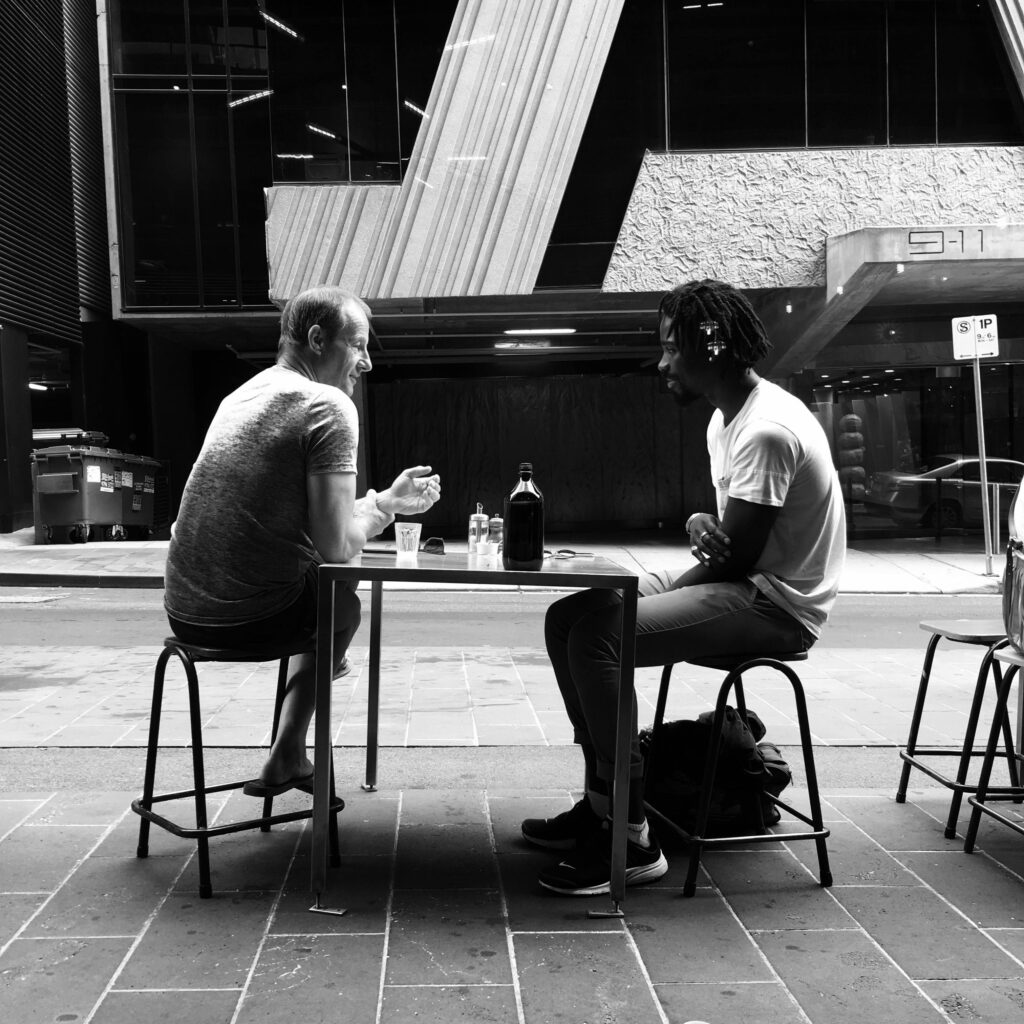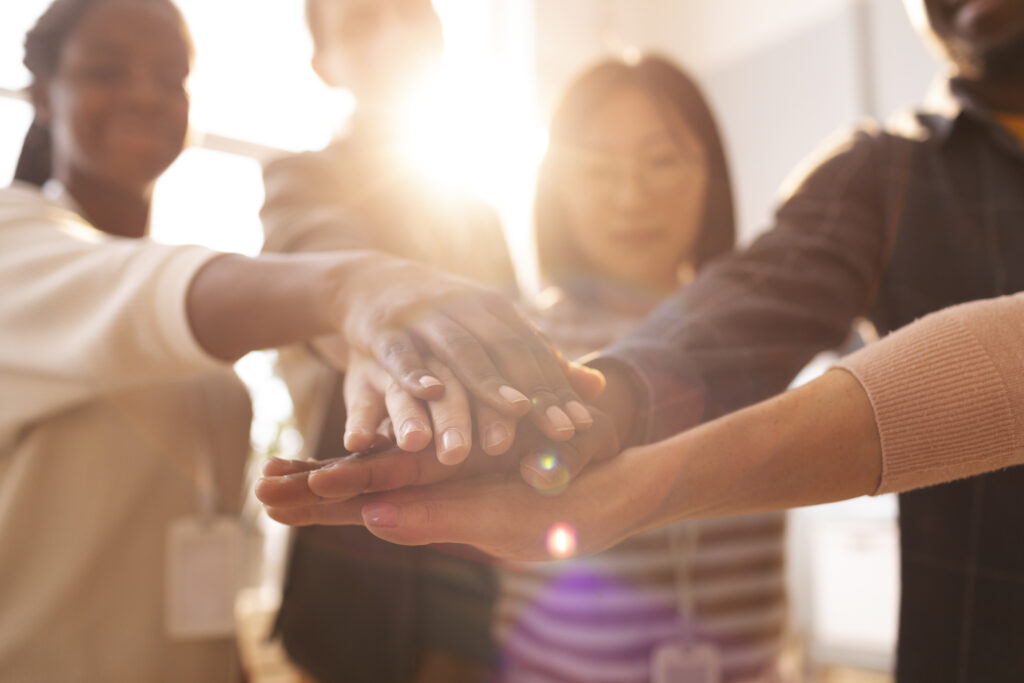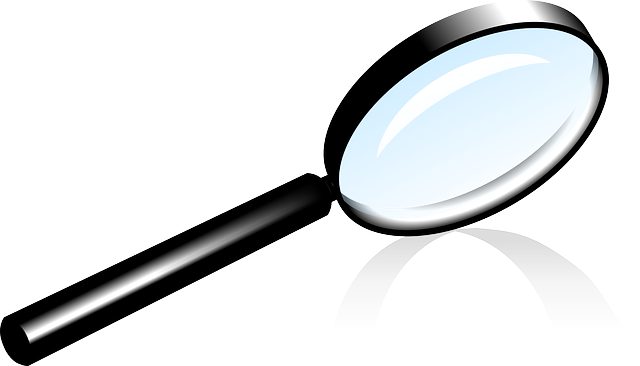Expressing Personal Struggles: The Power of Sharing

The Challenge of Opening Up Even individuals who possess a high level of emotional intelligence may find it difficult to articulate their personal struggles. The act of expressing these challenges is not always easy, regardless of one’s emotional skill set. The Benefits of Sharing Experiences Sharing our personal difficulties serves a dual purpose. Not only does it provide support and insight to others who may be experiencing similar issues, but it also offers us a valuable opportunity to reflect on and better understand our own feelings. Self-Reflection and Growth For example, writing about a tough situation at work may lead to the realization that similar challenges have been overcome in the past. This recognition can be empowering and help boost confidence as new obstacles arise. The Value of Shared Experiences If any of these experiences resonate with you, it is likely that you can draw strength from reflecting on your own journey. By sharing your story, you not only help yourself but also provide encouragement to others. In this way, both you and those around you benefit—truly a win-win situation.
The Transformative Power of Helping Others

A Journey Toward Kindness, Connection, and Collective Growth In a fast-paced modern world, where the race for achievement and the pursuit of personal goals often take center stage, the simple act of helping others can sometimes feel like a distant ideal. Yet throughout history, the practice of extending a helping hand has been the foundation upon which thriving communities are built and the underlying current that propels humanity forward. Helping others is not just a moral duty—it is a source of profound personal enrichment, a spark for societal change, and an invitation to experience the true meaning of connection. In this blog, we journey into the heart of what it means to help others, exploring why it matters, the various ways we can make a difference, and how these acts ripple outward, shaping lives in ways both seen and unseen. Why Helping Others Matters At its core, helping others is an expression of empathy—the ability to understand and share the feelings of another. Empathy prompts action, transforming compassion into tangible benefit. Whether it’s offering support to a friend in need, helping people to access resources to make their life easier to manage, volunteering at a local shelter, offering a ride to a doctor appointment, or simply lending a listening ear, acts of kindness uplift individuals and inspire hope. But the impact of helping others extends far beyond immediate recipients. Altruistic behavior is deeply rewarding, releasing endorphins and fostering a sense of fulfillment. Helping others may provide a high level of happiness, decreased stress, and improved mental health. In fact, communities built upon cooperation and generosity are more resilient, adaptable, and harmonious. Moreover, helping others challenges us to see beyond our own perspective. It cultivates humility, broadens our understanding of the world, and bridges gaps that divide us. When we step into another’s shoes, we learn the value of patience, gratitude, and shared humanity. Everyday Acts of Kindness Helping others does not always require grand gestures. In fact, the most transformative acts are often the simplest ones, woven quietly into the fabric of daily life. Here are a few ways to foster kindness and support within your own community: Offer a smile or a kind word: A genuine greeting or a simple compliment can brighten someone’s day and foster a sense of belonging. Listen actively: Sometimes, the greatest gift we can give is our attention. Listen without judgment; let people know they are heard and valued. Share your skills: Whether it’s tutoring, fixing something, or teaching a craft, sharing what you know can empower others and cultivate lifelong connections. Volunteer your time: There are countless organizations that rely on volunteers, from food banks to animal shelters, to giving someone a ride to the grocery store. Even a few hours can make a significant impact. Support local initiatives: Attend community events, promote small businesses, or participate in local cleanups to strengthen the fabric of your neighborhood. Be there in times of need: Reach out to those who are grieving, struggling, or facing challenges. Sometimes, presence alone is a powerful form of help. The Ripple Effect: How Helping Others Multiplies One of the most remarkable aspects of helping others is the ripple effect it creates. Acts of kindness inspire others to pay it forward, generating waves of goodwill that extend far beyond the original gesture. When you help someone, you set a precedent—they, in turn, may help someone else, and so the cycle continues. Communities built on mutual support become stronger, more compassionate, and better equipped to face collective challenges. I saw this happen in my workplace as we came together to help patients. Consider the story of a teacher who goes above and beyond to encourage a struggling student. That student’s newfound confidence may translate into success, which could inspire them to mentor others later in life. Small acts, multiplied over time, become sources of transformation and growth. Overcoming Barriers to Helping Despite its many rewards, helping others is not always easy. Barriers can include time constraints, fear of rejection, uncertainty about how to help, or even concerns about being taken advantage of. Yet most obstacles can be overcome with mindful intention and a willingness to learn. Start by recognizing that imperfection is not a flaw—it’s a part of being human. You don’t need to have all the answers or fix every problem. Often, simply showing up, offering encouragement, or sharing a moment of understanding is enough. If you’re unsure how to help, ask questions and listen to what people need, rather than assuming. Remember, the most meaningful help is tailored to the individual and given without expectation of reward. Helping Others in a Digital Age Technology has transformed the ways in which we interact and support one another. Online platforms and social media offer new opportunities to spread kindness, share resources, and connect with those who may be isolated or in need. Virtual volunteering, fundraising campaigns, and crowdsourcing solutions have become powerful tools for collective action. However, digital spaces can also breed misunderstanding and disconnect. The challenge is to use technology intentionally—to foster real relationships and encourage genuine support. Consider joining online communities that align with your passions, sharing positive messages, or donating to causes that resonate with you. The digital world, when harnessed thoughtfully, expands the reach of our helping hands. The Personal Benefits of Helping Others While the purpose of helping others is not personal gain, the benefits to the helper are undeniable. Serving others boosts self-esteem, reduces feelings of isolation, and provides a sense of purpose. It can also offer perspective during difficult times, reminding us of our own strengths and resources. Helping others teaches vital life skills—communication, empathy, adaptability, and conflict resolution. It encourages gratitude and reorients priorities, focusing attention on what truly matters. For children and young adults, participating in acts of service fosters character development and empathy, laying the groundwork for lifelong engagement. Stories of Kindness: Inspiration from Around the World Across cultures and continents, stories of kindness abound, offering inspiration and hope. Volunteers
Finding the Right Place

Once my brother and I accepted that our father needed to transition into Assisted Living, the next challenge was finding the right place for him. We wanted somewhere that would provide him with the care and structure he needed while still preserving his sense of independence and dignity. The search was daunting, filled with tough questions and emotional moments, but ultimately, it was a necessary step in ensuring his well-being. We started by making a list of must-haves. A place with attentive staff, engaging activities, good medical support, and—most importantly—a welcoming community. We toured several facilities, each with its own set of pros and cons. Some places felt too clinical, others too impersonal. Some had impressive amenities but lacked the warmth we knew our father needed. It became clear that this wasn’t just about finding a place with good reviews; it was about finding a place that felt right. One of the most difficult parts of the process was involving our father. We wanted his input, but we also knew that his cognitive decline made it hard for him to process the gravity of the situation. Sometimes, he resisted the idea altogether, wanting to stay in his home. Other times, he seemed open to the change but quickly forgot our conversations. It was a delicate balance—making sure he felt heard while also making the decision that was best for him. We asked every question we could think of. How was the staff trained? How did they handle medical emergencies? What activities were available to keep residents engaged? How did they ensure new residents felt at home? We also paid close attention to the residents themselves—did they seem happy? Did they interact with one another? The energy of a place was just as important as its amenities. After weeks of searching, we finally found the right place. It was warm and inviting, with a staff that genuinely cared about the residents. The facility had a good balance of independence and support, offering structured activities but also allowing residents the freedom to make their own choices. Most importantly, the people there—both staff and residents—felt like a community, not just a care center. Even with all the research and preparation, the final decision was emotional. We knew this move symbolized a new chapter, one where our father would no longer be living in the home he had known for so long. But we also knew that this was the right decision for his safety, his health, and his quality of life. In the next post, I’ll share what it was like to actually make the transition—how we helped our father adjust, the initial struggles, and the small victories that reassured us we had made the right choice.
Take the “I Statement” challenge

Do you ever use “I Statements”? What’s your experience with them? Helpful? Annoying? Something else? “I-Statements” are a communication strategy for bringing up a concern or addressing a conflict with another. They typically follow this fill-in-the-blank format: I feel _____________When you _____________Because _____________I would like _____________ Yet, like so many communication strategies, many variables can make a simple method more complicated than meets the eye! See what you think about this “I-Statement” challenge. Three nurses are at the nurses’ station. Two are talking about a new policy and a third, Donna, is reviewing a patient’s lab results. Donna is finding it difficult to concentrate. Which is her best statement? Image by Yerson Retamal from Pixabay 1) Shhhhh, stop talking! 2) I’m frustrated with your talking. It’s hard to concentrate and I’d appreciate it if you would quiet down. Answer It depends on what the relationships are and what Donna would like them to be! If Donna has a positive history with them, #1 is probably fine. They’d likely apologize, lower their voices, and move on. If Donna doesn’t know them or there is tension among them, Donna would be wise to use an “I statement”, like #2. It would likely be perceived in a less-threatening more collaborative manner. These are important considerations in building new relationships or being more cautious when unresolved conflict may be present. An “I-Statement” encourages speakers to show ownership about a concern, want, or need. It includes identification of emotions and invites other speakers to participate in the conversation in a collaborative fashion. In short, “I Statements”, when used properly: Increase the chance of effective communication and collaboration Lead to more efficient problem-solving and conflict resolution Validate many different perspectives Build and nourish relationships Build self-awareness, self-respect, and self-efficacy They are not perfect or always effective yet, “I-Statements” are a valuable tool in building effective communication skills and collaborative relationships. Medical Improv is a teaching modality used to build communication skills and promote trusting relationships. In the high-stakes, high-stress work of healthcare professionals, interactions should be effective, respectful, and compassionate – for everyone!
Loneliness and Its Silent Toll

Life is full of twists and turns, and sometimes, it can feel like we’re navigating it all alone. Most of my greatest moments with friends have been meaningful conversations over tea or coffee. We attempt to solve every issue in our lives, kindly judging ourselves for the wrong turns we might have taken and laughing about it. Women, in particular, need this type of deep bonding to overcome life’s obstacles. True friendship is a spiritual practice. It not only keeps you dedicated and devoted to one another but grounds you as well. Women have a unique ability to create a safe space for each other—one where the other person can grow, heal, and lean on her in times of need. This kind of space enhances the self-confidence that one might lack, allowing her to feel loved by another human being. In today’s fast-paced world, it’s easy to feel isolated, even when surrounded by people. This sense of loneliness can quietly lead to depression, anxiety, and a growing sense of disconnection from the world around us. We don’t just feel it in our hearts, but in every organ of our body. When loneliness spreads throughout our physical system, every cell senses the uncertainty of not being loved or being ignored. Our stress levels rise, and over time, chronic aches and pains surface like termites quietly eating away at the foundation of our well-being. Our foundation weakens when this powerful connection is nowhere to be found. We are naturally wired to nurture and connect, and when we surround ourselves with like-minded souls, we create a web of love and support that strengthens our mental, emotional, and even physical health. When we share our stories with others, we feel heard. This act of release lightens us and brings joy, creating room for healing. The importance of celebrating each victory in our lives with a good friend cannot be overstated—it opens up more opportunities for success in the future. How many times have you thought about calling someone dear to you to share good news? How often have you planned birthday gatherings to celebrate yourself or another? All these gatherings, for one reason or another, remind us that we are here to share life experiences and feel stronger as beings. The act of sharing life with others creates a sense of belonging, which is vital for maintaining balance in our minds and hearts. Feeling understood and supported can make all the difference in how we view the world and ourselves. Friendships nourish us. Whether we connect with old friends from college or new people in our new town, we crave connection. The more people we interact with, the more our emotional hearts open to love. With all the advances in technology, it might seem that we should be able to connect more easily, but it doesn’t always feel that way. We’re getting further from one-on-one visits with friends. Talking on the phone or texting may suffice for a while, but being in each other’s presence—feeling the joy of a friend and hearing her laughter as you share a funny story—is a whole different experience. Offering a treat to your friend or sharing your culinary talent with her is a gift that technology cannot replace. While video calls and images on a screen are perfect for distant relatives and friends, for those close by, we should make the time to visit and maybe even exchange a hug to show our love. Today, I watched my two-year-old granddaughter saying hello to everyone and approaching others on the playground. This teaches us to pick up the phone and reach out to a friend, to say hello to a neighbor and exchange a few sentences, or to invite friends to a small gathering. Show up to gatherings and step out of your self-made cave to feel connected and grounded once again. Don’t let loneliness become another chronic issue in your life. We all have something to share with others that they, too, are seeking. Nameste, Shab.
Fun Improv Activities Awakens Deep Listening Skills

Simple and Profound “That’s the first time I ever felt heard”, a nurse shared during a communication workshop! My jaw dropped. I wondered how she could possibly be a good listener if she didn’t know what it was like to feel heard. It was a powerful teaching moment for me in terms of integrating improv activities into communication workshops. Image by Myriams-Fotos from Pixabay The nurse had just participated in an experiential activity I adapted from improv to teach communication and related skills. A a teacher, the nurse’s feedback was compelling. I could see how it would help her appreciate the value of truly being heard. From here, she could internalize the experience and develop awareness about listening with respect to being connected, understood, valued This skill development is much deeper than simply hearing what someone says and checking off a box. It is a door to becoming more sensitive to how and when this kind of focused listening could be helpful. Such as a patient who is nervous about a procedure, a family member becoming angry about a treatment issue, or a colleague showing signs of burnout. What’s more, her future life experiences, feedback, and leadership guidance could all be grounded back to this simple, profound experience. This contributes to a ripple effect of more awareness and skill development for the nurse and modeling for all in her circles. What is this activity? Same-Time-Story, also known as Story Mirror, involves one person telling a story while her partner tries to tell it simultaneously. Something you can only do by focusing on what your partner is saying and if s/he goes at a pace conducive to your success. You can see it here in this two-minute video from a workshop several years ago. Notice how in the middle I tap one of the participants on the shoulder, signaling the switch of leadership roles! https://www.youtube.com/watch?v=h8yj7r_C36k Other valuable feedback When facilitated properly, Medical Improv experiences like this are engaging and safe for social and emotional development. The learning is internalized as staff practice, reflect on and discuss the skills, and their application to professional communication and organizational goals. In this particular activity, participants have shared things like: “I had to focus on her and stop thinking.’ ‘Her facial expressions helped.’ ‘I realized I was speaking too fast.’ ‘You never know what is going on in someone’s head.’ ‘It was fun!” Imagine how the learning content can be framed around vital skills such as expression of nonverbal language, identifying social cues, developing awareness of speaking too fast for someone to understand and what that might feel like, and/or realizing we don’t know what others are thinking even if we think we do! When facilitated properly, Medical Improv experiences are engaging and safe for social and emotional development. The learning is internalized as staff practice, reflect on and discuss the skills, and their application to professional communication and organizational goals. With this activity, nurses, doctors, and other healthcare professionals become better prepared to listen attentively to an anxious patient, a colleague in trouble, constructive feedback from a manager, or a family member with signs of escalating anger.
Looking for signs of humanity? Try this!

What are humans capable of? Take a minute and watch this powerful video. See what it brings up for you in terms of human nature and what’s possible. Even in today’s chaotic world and often amidst emotionally challenging interactions. https://youtu.be/7qzMfgtf_GI?si=KTk8rVYqPDnTwMtK What are humans capable of? Sometimes, glimpses into human behavior offer surprises. What did you observe in this little video? I found it compelling because it shows us: What can happen in a pause? How kindness is contagious. How technology does not have to drive our behavior. How moving gratitude and compassion are So much about My Work Product is based on helping each other. That’s why, when I saw it, I couldn’t resist sharing it here!
Why Am I Still Looking for Success?

Have you ever reflected on your life and surprised yourself with what you discovered? Beyond the traditional years of schooling, I dedicated an additional ten years to college and specialized training. Thousands of dollars were spent, countless hours of study, and an immense amount of energy went into fulfilling my internship and externship requirements. Life didn’t pause while I pursued my education, nor did it slow down when I became a mother. It certainly didn’t wait when I fell ill and had to focus on recovery. I was riding the wave of my own life—a journey uniquely mine, one that no one else could truly experience the way I did. Yet, despite overcoming countless challenges and navigating life’s ups and downs, I still find myself being my own harshest critic, constantly demanding more. But why? What is wrong with this picture? I am still chasing the success I once envisioned in my youth. However, as I approach my 60s, I realize that the meaning of success has begun to evolve. I recall my elders advising me to enjoy life and to understand that goals are not just destinations but part of the journey itself. At the time, I nodded politely, but did I truly listen? Only now, with a shorter road ahead than behind me, do I fully grasp their wisdom. Looking back, my journey has been long. There were moments when I had the opportunity to change paths, yet I stayed the course. I took a leap of faith once, and it turned out to be the right one for me. I did my best with the knowledge and awareness I had at the time. Instead of dwelling on what could have or should have been, I choose to see every step as a valuable lesson. The Universe Has a Plan If you pay close attention, you’ll notice that the Universe never acts without purpose. It works alongside you, like a loyal friend, nudging you out of your comfort zone when necessary and presenting new lessons when the time is right. It doesn’t place blame but rather encourages self-reflection. If you miss a lesson, it will return in another form, gently reminding you that there is still a chapter left unread. The moment you trust this process, you will experience unwavering support unlike anything else. The Universe provides in alignment with your thoughts. You don’t even need to voice your desires—it responds to your energy. Life becomes so effortless that doubt fades, replaced by a deep sense of knowing. Redefining Success: A Simple Exercise The next time you find yourself questioning success, try this: Ask yourself: What does success mean to me? (Let your mind give you a quick, instinctive answer.) Ask again: What does success mean to me? (Strip away external influences—no one’s opinion matters but your own.) Ask one more time: What does success mean to ME? (Dig deeper. How does this definition make you feel? Will achieving it brings genuine happiness?) Sit with your final answer. Even if it’s not what your ego expected, give yourself the space to be honest and courageous in facing it. Take time to reflect. Journal your thoughts. Go for a walk. Allow your inner wisdom to surface without judgment. Then, return to your life’s drawing board and align your path with that raw, honest answer—free from fear or societal expectations. Your opinion of your success is the only one that truly matters. If you chase goals based on others’ expectations, you may find yourself alone in disappointment. But if you choose a path that honors your needs and truth, you will experience a blissful solitude—one filled with self-fulfillment. A Realization in Action A dear client of mine recently faced a crossroads in her career. After two decades of dedication to her job, she was finally considered for a prestigious position—one that required extensive travel and demanding hours. She was thrilled to be among the top candidates and eagerly attended her first major meeting far from home. However, as these meetings became more frequent, she began to feel the toll on her body and mind. In the end, the company selected another candidate, leaving her deeply disappointed. As we talked, I guided her through the same exercise above. Each time she answered, her response evolved. By the third question, she had an epiphany—she wasn’t truly passionate about the position. Deep down, she already knew she was talented and successful. She had been chasing external validation rather than inner fulfillment. A smile spread across her face as she realized she didn’t need that title to prove her worth. The Truth Within If we ask ourselves these three questions before every major decision, we might uncover truths buried deep within us. This practice offers a powerful way to connect with the most authentic version of ourselves. So, the next time you find yourself searching for success, pause. Listen. Define success on your own terms. Namaste, Shab
A Letter of Gratitude

I came to know you at a young age, praying for my exams and wishing for the latest toys. Most of the time, it worked, and when it didn’t, I didn’t know better. Slowly, I began having conversations with you, just like two best friends. These were full-on dialogues with questions, which I probably answered myself as the issues were analyzed in my head. I just remember feeling better at the end of it, leaving me in peace and contentment. As I grew older, I learned to listen more instead of trying to talk to you directly. I began waiting for messages in different forms, and each time, my senses directed me to the right message. This became my way of finding guidance in life. Instead of seeking answers outside of myself, my inner voice—my intuition—nudged me in the right direction. This inner gift would leave me with either a sense of calmness or uneasiness about the issue at hand. That’s how I knew whether the choice was right for me or not. Meanwhile, the ups and downs of life became more challenging over time. Yet, I never lost touch with you. I always felt connected, even when every sign seemed to invite doubt. This sense of oneness was the one thing that felt stable and unchangeable in the Universe. Your presence meant so much to me. Whenever I felt disappointed in humans, I knew you would be there for me. In the past, I have asked you for the impossible, and you delivered. You have asked me for the impossible, but you gave me the courage to face it, and I was able to deliver. Our dialogues evolved into pure silence, and the answers came from within me. My alignment with the Universe and everything around me grew stronger, and you still stood by me, guiding and supervising. You heard my wishes without me even expressing them out loud. You healed my wounds and hurt before they could begin. Now, you are as close to me as my heart itself. Inseparable, I feel. You have laid a solid foundation for me to trust you in any situation. My doubts began doubting themselves. My worries could no longer rush in uninvited. My wishes became centered on closeness to you and on deepening my trust in you. I no longer yearned for things but rather for a stronger, deeper connection with you. I am writing this letter to express my gratitude for your presence in my life. Thank you for all you have shown me and for all you will continue to reveal in the future. I am practicing staying still and quieting my mind to hear your voice resonate throughout my entire being. Thank you for bringing your awareness not only to me but also to everyone I have the chance to touch and heal with your presence. Despite all the noise out there, I am listening. Your guidance is deeply appreciated. Truly yours, Shab
Finding Balance in Modern Healthcare

For over thirty years, I worked as a healthcare professional and radiation therapist in the Bay Area, California. When I first started, writing in a patient’s chart required a pencil—yes, a pencil. We used white-font pencils to meticulously fit all the necessary information onto the treatment sheet in a hard-paper chart. These charts were filed in drawers and bookshelves, a far cry from today’s digital systems. A decade later, computers began revolutionizing healthcare. They offered significant advancements but also caused chaos whenever they went down. Despite the challenges of adapting to machines, we humans managed to persevere and gradually witnessed how technology surpassed our abilities. In school, I learned to calculate treatment plans by hand, relying heavily on memory and manual computations. Fast forward two decades and students graduating from radiation therapy programs no longer need to perform complex calculations; the software does it for them. The human brain’s role has shifted dramatically. In just one department I worked in, three different types of treatment software were introduced within ten years. While some upgrades offered marginal differences, software companies excelled at marketing their products. Medical departments purchased these programs to stay competitive and attract more patients, even when the actual benefits were minimal. The Rapid Pace of Change The relentless pace of technological advancements created a growing gap between my generation and the newer one. Now that I’ve stepped away from the fast-moving life of healthcare, I still find myself wrestling with the same dilemma: Where do we draw the line to ensure machines don’t completely take over, dehumanizing our lives? At large medical establishments, I’m often given the option to check in for appointments via my phone. If I decline, I’m greeted by a kiosk that processes payments and checks me in without any human interaction. Over the years, I’ve noticed fewer people in waiting rooms, fewer receptionists welcoming patients, and more machines replacing human roles. The Human Touch I don’t know about you, but I miss the personal touch. I miss conversations with the person behind the desk who might offer an encouraging word. I miss knowing my insurance premiums were supporting a human employee. I miss the days when doctors sat across from us, engaged in genuine conversations, and truly listened, instead of focusing on their computer screens to take notes. I miss being fully examined by a physician, rather than relying solely on bloodwork or imaging results. Now, my doctor begins visits by asking for consent to record our conversation via an AI device. This shift makes me feel more anxious than before because so much of the human care I once relied on has been lost in translation between humans and machines. In the past, my doctor and I would exchange personal stories, fostering a connection that went beyond the clinical. I’d leave feeling cared for, understood, and connected to a human member of my medical team—not just a series of machines. Reclaiming Human Connection Next time you visit a doctor, take a moment to notice how important it is to connect with another person. Whether it’s a patient, a receptionist, or the physician, human rapport matters. Take the time to say hello, smile, or greet someone who might need a moment of connection. These small gestures remind us that while technology has its place, it should never replace the essence of human care. Namaste, Shab
